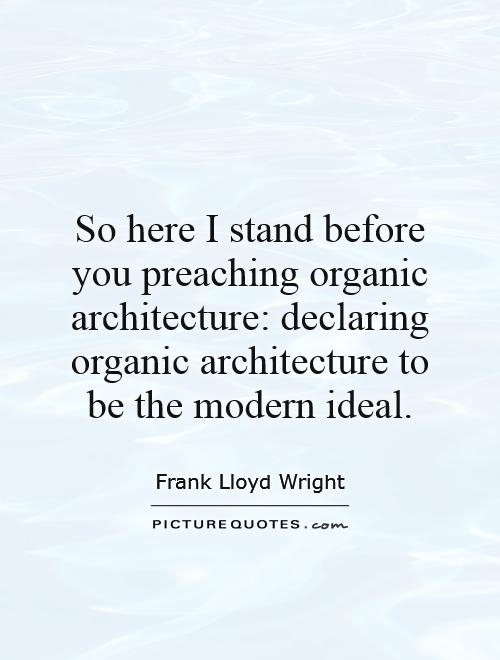So here I stand before you preaching organic architecture: declaring organic architecture to be the modern ideal

So here I stand before you preaching organic architecture: declaring organic architecture to be the modern ideal
Frank Lloyd Wright, one of the most influential architects of the 20th century, was a pioneer in the field of organic architecture. He believed that buildings should be designed to harmonize with their natural surroundings, rather than imposing themselves upon the landscape. Wright's philosophy of organic architecture was deeply rooted in his belief that architecture should reflect the natural world and the inherent beauty of the materials used in construction.In his famous 1939 lecture at the Taliesin Fellowship, Wright declared organic architecture to be the modern ideal. He argued that buildings should be designed in harmony with nature, using natural materials and incorporating elements of the surrounding environment into the design. Wright believed that this approach would create buildings that were not only aesthetically pleasing, but also functional and sustainable.
Wright's organic architecture was a radical departure from the prevailing architectural styles of the time, which often emphasized ornamentation and grandeur over practicality and simplicity. Wright's designs were characterized by their use of natural materials such as wood, stone, and glass, as well as their open floor plans and integration of indoor and outdoor spaces.
One of Wright's most famous examples of organic architecture is Fallingwater, a house he designed in 1935 for the Kaufmann family in Pennsylvania. The house is built over a waterfall, with cantilevered balconies that seem to float above the rushing water. The design of Fallingwater reflects Wright's belief that buildings should be integrated into their natural surroundings, rather than standing apart from them.
Wright's influence on the field of architecture cannot be overstated. His ideas about organic architecture have inspired countless architects to rethink their approach to design and construction. Today, many architects continue to draw inspiration from Wright's work, seeking to create buildings that are not only beautiful and functional, but also in harmony with the natural world.












 Friendship Quotes
Friendship Quotes Love Quotes
Love Quotes Life Quotes
Life Quotes Funny Quotes
Funny Quotes Motivational Quotes
Motivational Quotes Inspirational Quotes
Inspirational Quotes